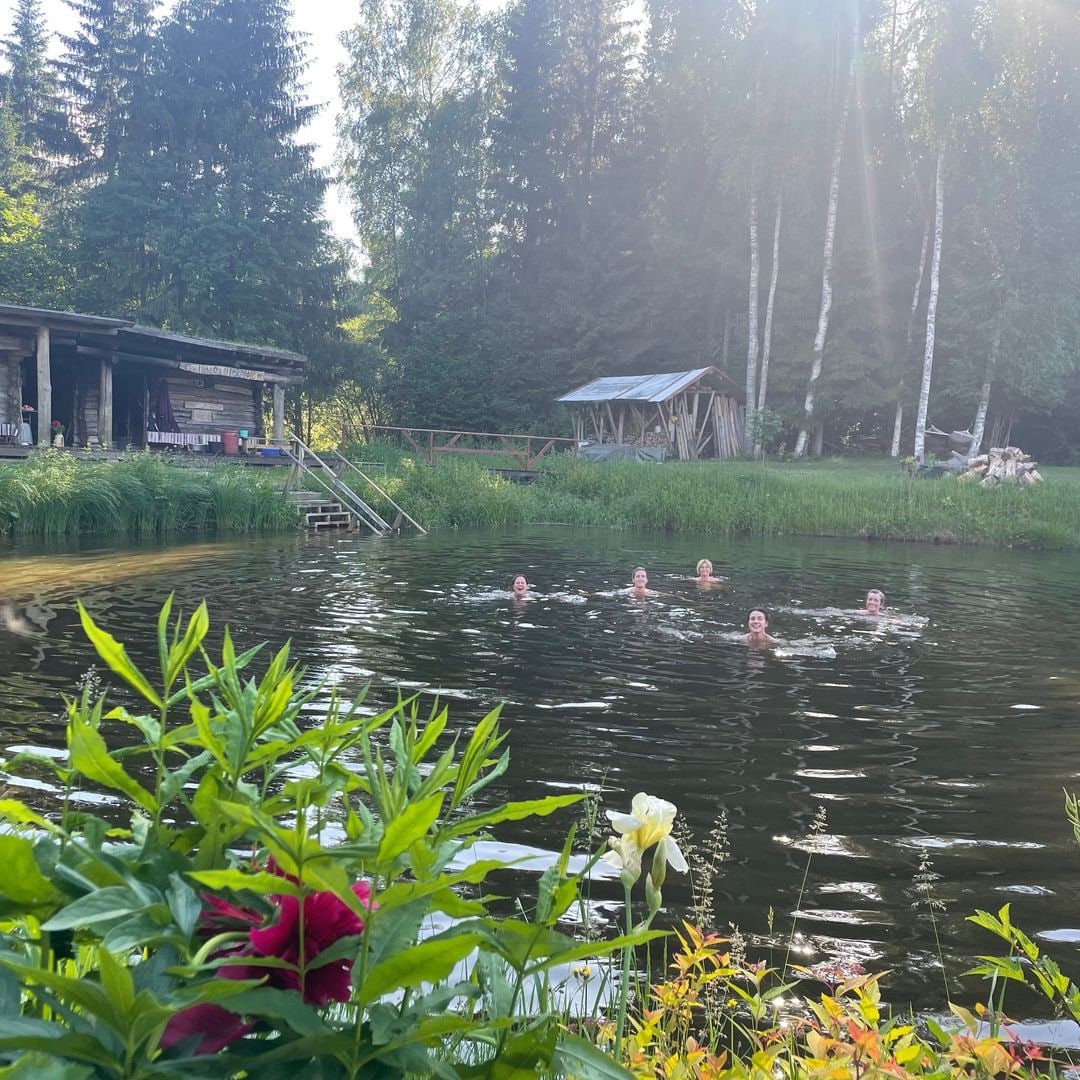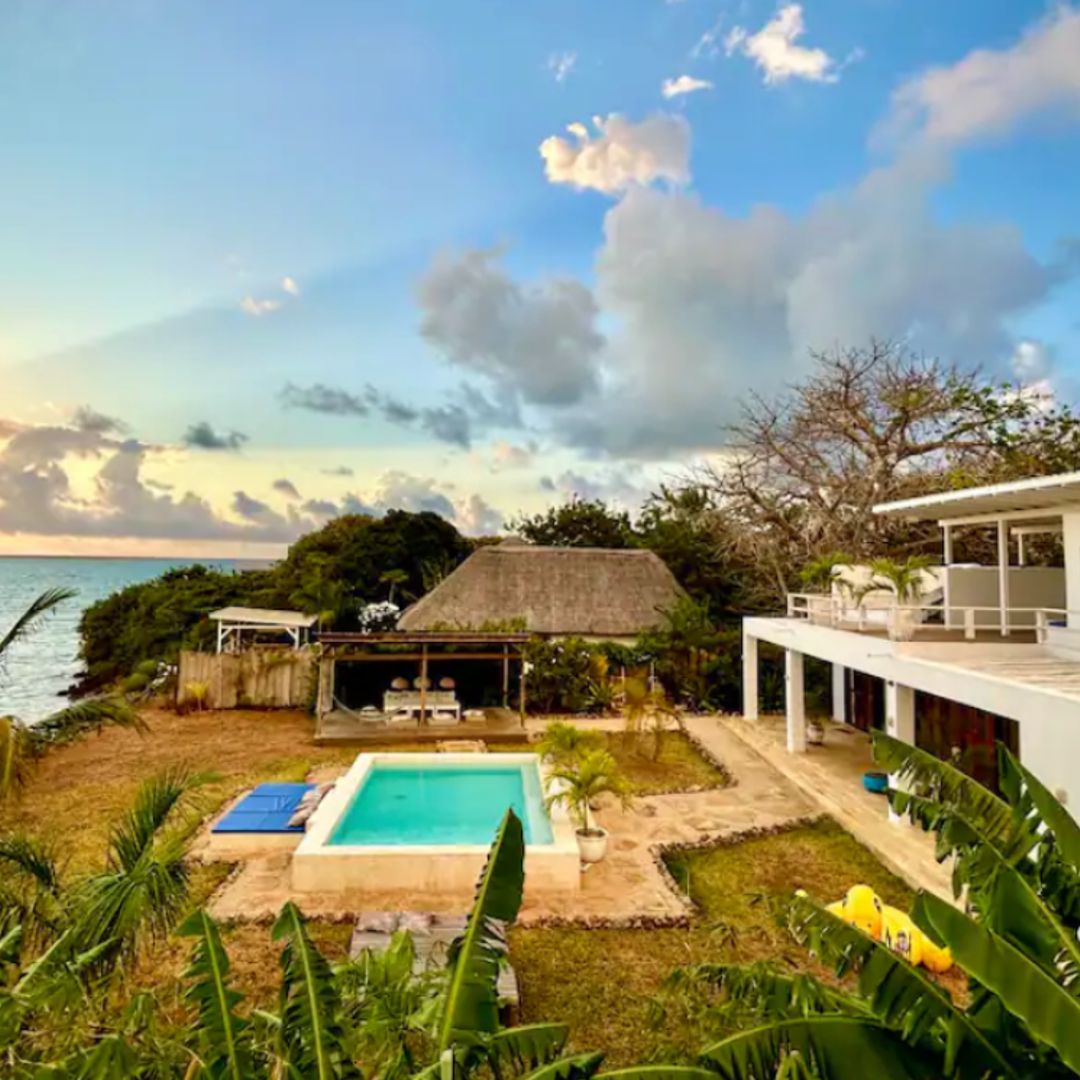It's tempting to think of Tunisia only as a seaside destination – the beautiful sands and the clear blue waters along the coast make it ideal for beach holidays – but in fact the country offers plenty of other delights: the exotic dunes and oases of the desert preside over the Berber towns in the south, while in Tunis, the capital, some 700 monuments make up the medina, the oldest part of the city and a UNESCO World Heritage site, and the holy city of Kairouan with its rich architectural heritage is also a UNESCO World Heritage site. And then there are other, smaller, but equally enchanting places, such as the village of Sidi Bou Said.
Just 20 kilometres from the capital, this little gem stands on a promontory overlooking the Mediterranean. It is criss-crossed by narrow pedestrian streets and staircases that run between the traditional white and blue houses whose doors are studded with large metal rivets and decorated with the protective hand of Fatima, which guards those who live there from bad fortune.
A place of pilgrimage to the tomb of the thirteenth century Sufi saint to whom it owes its name, until 1820 no Christian was allowed to enter the town. Strangely, though, its exquisite conservation owes much to a foreigner: the French Baron Rodolphe d'Erlanger, orientalist artist and a great expert on Arab music, concerned that the traditional style and atmosphere of Sidi Bou Said might be lost, persuaded the Bey of Tunis to deny building permission for any construction that was not true to the local Arab-Andalus style. That his plan was a complete success is clear from the moment you enter the village.
Clean and bright, enveloped in the scent of jasmine, orange blossom and pelargoniums, Sidi Bou Said – known affectionately simply as Sidi-bu – hangs on the hillside wrapped in an incredibly clear light that reflects from the whitewashed houses with their discreet latticed windows from which the womenfolk could look out without being seen. The typical blue of the paintwork echoes the intense colour of the sky and the waters in the Bay of Tunis.
A visit to the Cafe des Nattes is a must, where you sit on a mat to sip tea with pine nuts or enjoy a peaceful hookah or shisha. And you should take a walk around the gardens and admire the architecture and decoration of the Ennajma Ezzahara Palace, built by the Baron d'Erlanger and now converted into a museum and centre for Mediterranean music studies. But really there's no obligatory planned tourist trail around Sidi-bu; the best approach is simply to wander, not even bothering to look at a map: you won't get lost, and the picturesque corners and views will reveal themselves in a series of serendipitous discoveries.
Unsurprisingly, in high season, the village fills with international tourists; but it's also a must for Tunisian families on day trips from the capital, and for Fine Arts students, who you'll find all around, intent on their sketchbooks, trying to capture the atmosphere that inspired such greats as Klee, Matisse, Andre Gide and Simone de Beauvoir. Just one suggestion: if you are spending some time in Tunisia, leave Sidi Bou Said till the end of your trip; if you don't, everywhere else may be a bit of a disappointment.
Tips & suggestions
Getting there: Tunisair fly direct from London Heathrow to Tunis with one way flights starting at under £100.
Getting around: Access to Sidi Bou Said is by train from Tunis, the capital, and the journey takes about half an hour. Cars are not allowed into the village centre, so all visits involve walking.
Where to stay: Dar Said, in the heart of Sidi-bu, is one of the most charming hotels, with 24 rooms and boasting a traditional hammam, all within a tastefully restored nineteenth-century mansion. Alternatively, there's another former mansion transformed into the charming Dar Fatma hotel, where Philippe Starck furnishings are used to fine effect alongside the traditional blue and white paintwork, bare stone and arches.
Where to eat: For teas and freshly-squeezed orange juice with pastries, the Cafe des Nattes is ideal, as is the equally popular Sidi Chebaane, whose terraces are arranged in a cascade overlooking the bay; the restaurant Aux Bon Vieux Temps (56, Hedi Zarrouk), serves Tunisian and French specialities, and Dar Zarrouk (Hedi Zarrouk) is another local institution where you can enjoy fine cuisine.
Don't miss: The exquisite twisted wire cages that are simply for decoration and need no bird locked inside; although they can now be bought at souks throughout the country, they are typical of Sidi Bou Said and make a perfect souvenir or gift.








